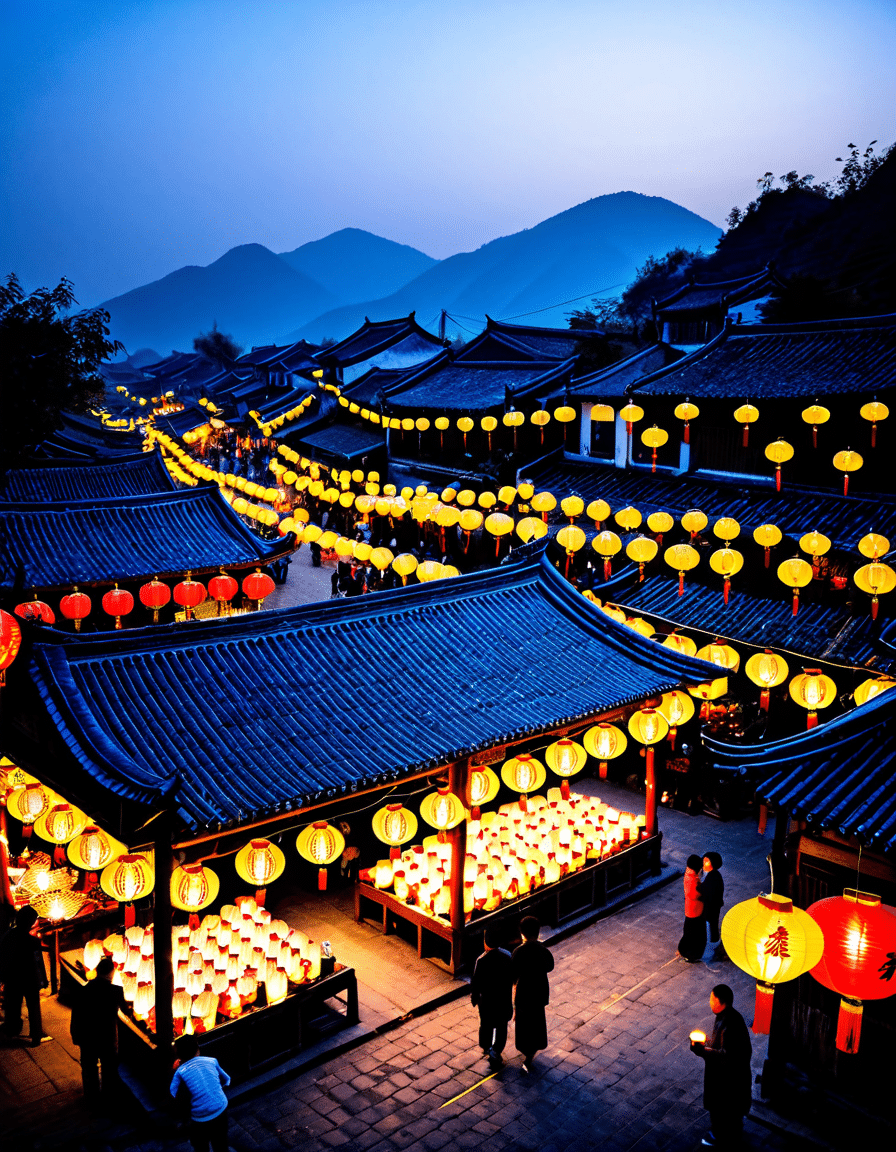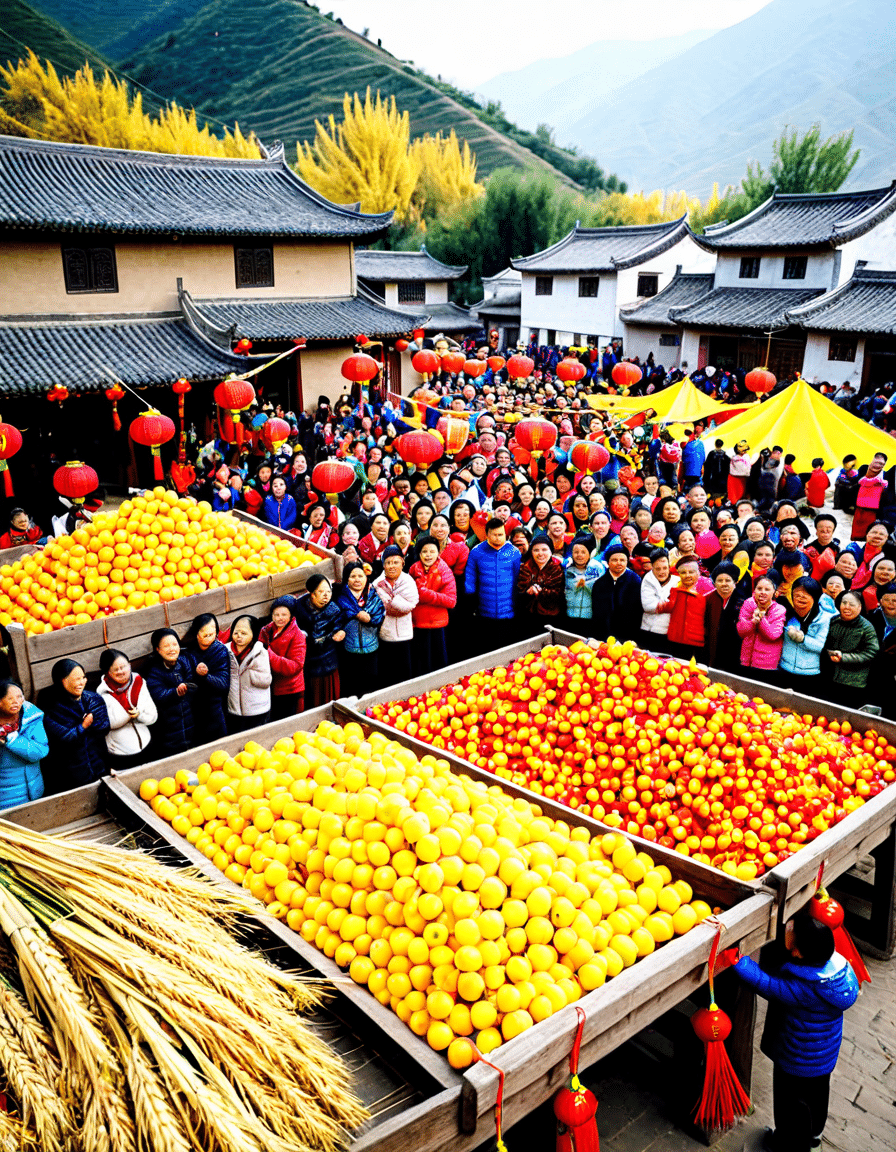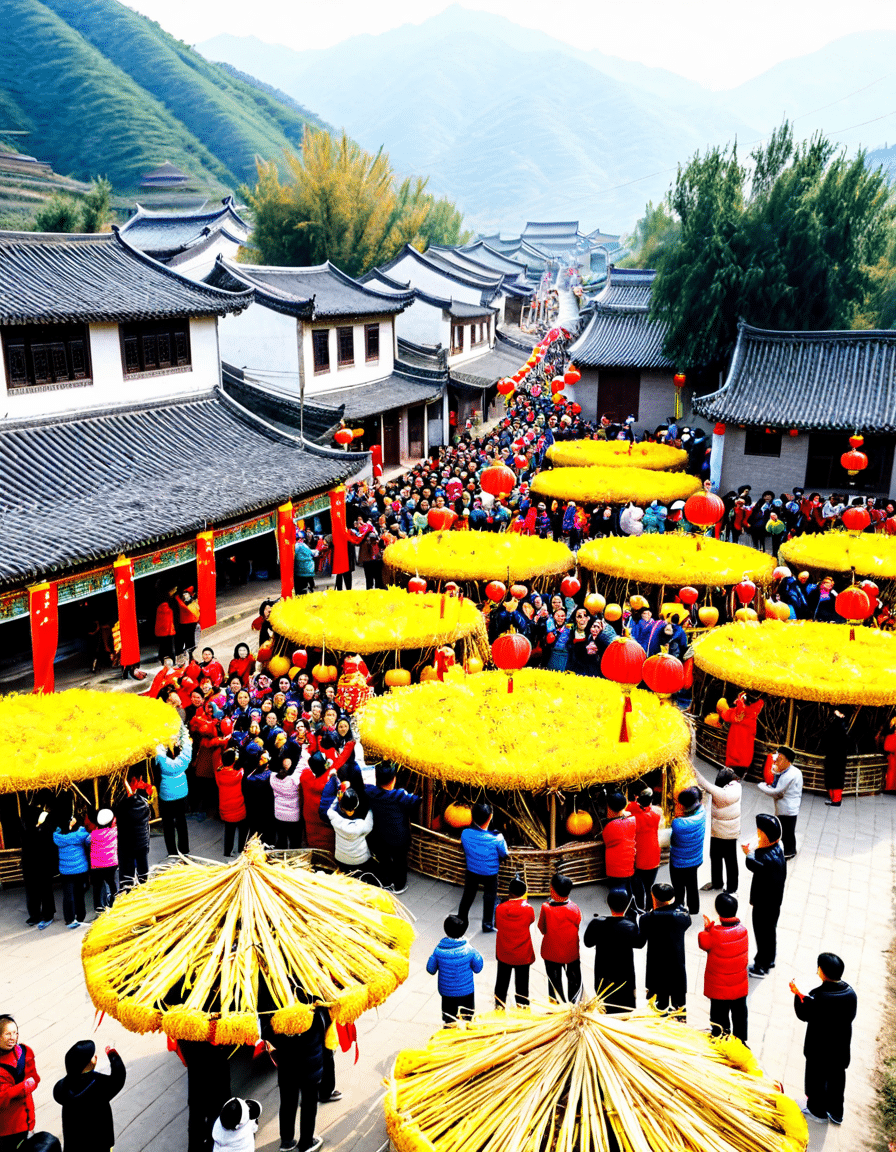The Enchanting Allure of the Chinese Village
Ah, Chinese villages. These captivating places, steeped in ancient tradition and vibrant culture, present a tapestry of history waiting to be explored. Often viewed as enchanting time capsules, they offer a peek into how traditions shape modern life. With over 2,500 years of history, a Chinese village isn’t just a pretty picture; it’s a living legacy, carefully preserving the essence of what once was while engaging with the present.
So, what’s the allure? These villages play host to fascinating stories and amazing practices that can inspire ambitious entrepreneurs and curious minds alike. In a fast-paced world, diving into the nuances of life in a Chinese village reminds us of the simpler, yet profound, lessons of living harmoniously with our surroundings. Let’s uncover seven hidden treasures that make these villages a source of wisdom and innovation.

Top 7 Hidden Treasures of the Chinese Village
1. The Wisdom of Traditional Architecture
When you stroll through a Chinese village, you’ll notice the distinct architectural styles that tell stories of generations past. Just think about the earth buildings, or “tulou,” found in Fujian province. These structures aren’t just beautiful; they serve a purpose, highlighting community living and resilience. Designed to withstand natural disasters, tulou symbolize how functionality can marry aesthetic appeal.
Imagine walking into one of these circular homes, feeling the sense of unity that envelops you. That’s the magic of traditional architecture. It merges ancient wisdom with modern needs, proving that sustainable living can thrive when communities prioritize their roots.
2. Agricultural Heritage Practices
Have you ever heard of the mesmerizing rice terraces of Yuanyang in Yunnan Province? This stunning landscape is a testament to centuries-old farming practices that cultivate not just rice, but also knowledge. Farmers here have mastered intricate irrigation systems that promote biodiversity. They’ve long understood the importance of sustainable agriculture, resisting climate change long before it became a global concern.
The farmers’ knack for permaculture is a fantastic model for aspiring agricultural entrepreneurs. By leveraging their time-tested methods, we can learn invaluable lessons about growing food in harmony with nature. Encouraging this kind of sustainable agriculture can not only feed the world but also preserve the heart and soul of the Chinese village way of life.
3. Vibrant Festivals and Celebrations
Cultural festivals are like a heartbeat for Chinese villages. For instance, take the Dragon Boat Festival celebrated in Quzhou. It’s not just about racing those beautiful, intricately carved boats; it’s also about community bonding and preserving folklore. Such events can stir up a sense of pride and tradition that links generations, reminding villagers of who they are and where they come from.
These festivals encapsulate a kaleidoscope of stories, sounds, and tastes. They not only celebrate the past but breathe life into community dynamics in ways that resonate deeply today. As young people carry on these celebrations, they reinterpret and adapt them, ensuring the essence of what makes the village special lives on.
4. Artistic Expressions: Craftsmanship and Calligraphy
In villages like Jingdezhen, you’ll find a treasure of artistic expression. Known as the capital of porcelain, this village is home to artisans who have honed their craft over centuries. Each piece of ceramic speaks of painstaking care, from choosing the right glaze to perfecting intricate designs. Engage with these local craftsmen, and you’ll come away not only with stunning artwork but with stories rich in tradition.
And let’s not forget calligraphy! This elegant art form serves as a way for villagers to connect with their culture and history. Practiced in community settings, calligraphy ensures that younger generations appreciate the beauty and importance of this art form, far beyond the fast-paced digital age. It anchors them to their heritage while encouraging creativity.
5. Spiritual and Philosophical Influences
A Chinese village often pulses with spirituality and deep philosophical practices. The temples scattered around places like Lijiang are not just calm spots for contemplation; they’re living schools of wisdom influenced by Confucianism, Taoism, and Buddhism. Elders often act as informal educators, teaching younger community members about harmony, morality, and respect for nature and each other.
These spiritual practices add layers of meaning to everyday life in the village. They instill values that community members carry with them, helping them navigate challenges while remaining deeply connected to their roots. This interplay between tradition and modernity is critical for anyone looking to foster a meaningful life or business model.
6. Culinary Heritage and Farm-to-Table Practices
Now, if you’re a foodie, get ready to savor the flavors of Chinese villages! The culinary scene here is a vibrant expression of local agriculture. Dishes prepared in traditional ways showcase the seasonal bounty, something exemplified by fermented delicacies in rural Shaanxi. These dishes aren’t just meals; they carry a narrative of sustainability, history, and cultural pride.
What fascinates me is how younger chefs bring a fresh twist to these ancient recipes. By fusing traditional methods with contemporary dining experiences, they open the door to a new audience eager to explore authentic village cuisine. It’s a delicious way to honor the past while embracing the future.
7. The Role of Technology in Preserving Tradition
Believe it or not, technology is becoming a vital ally for preserving traditional practices. Platforms like Xiaohongshu enable village artisans to present their work to broader audiences, creating a community beyond physical borders. E-commerce also plays a crucial role, helping local farmers connect with consumers craving organic produce and authentic flavors directly from the fields.
Virtual reality experiences allow urbanites to explore village life from afar, generating awareness and appreciation for these unique lifestyles. So, the blend of tradition and technology marks a new frontier, nurturing cultural appreciation in an age of digitalization.

Revitalization and the Future of Chinese Villages
Peering into the future, we see a mixed bag of challenges and opportunities for these enchanting locales. Urbanization may threaten their cultural integrity, yet it also beckons innovation. It’s a remarkable time for local communities as government initiatives bolster efforts to preserve ancient traditions. While adapting them for the contemporary world, they’re making sure that the heartbeat of the village remains strong.
Engaging with these hidden treasures of the Chinese village unlocks an understanding of sustainable practices, artistic expressions, and philosophies that nurture a balanced life. It’s not just about protecting the past; it’s about crafting a future that respects tradition while innovating for modern needs. As ambitious entrepreneurs, embracing these lessons can inspire us to foster cultural diversity and resilience.
So, venture out and explore—who knows what wisdom you might uncover in the charm of a Chinese village? Whether it’s through architecture, agriculture, or art, let these ancient practices guide you on your journey toward a more harmonious future.
Secrets and Charms of a Chinese Village
Rich Traditions in Simplicity
When you think of a chinese village, it’s easy to imagine serene landscapes, charming homes, and rich traditions that have stood the test of time. The simplicity of life in these villages often hides fascinating stories and quirky trivia. For instance, did you know that many villages still celebrate ancient festivals that date back thousands of years? They come alive with vibrant colors and joyful celebrations that make travelers feel like they’ve stepped into a time machine. Such authenticity is rarely found in bustling cities, making a visit to a chinese village a must for anyone wanting an immersive experience.
Speaking of vibrant settings, imagine enjoying an outdoor daybed while taking in the sights and sounds of a traditional festival. Those cozy spots are perfect for soaking up local culture and mingling with villagers. There’s a certain charm about gathering with locals around an outdoor space, sharing stories that may remind you of moments captured in popular culture, like the ones featured in the tales of celebrities, including lesser-known figures like Marcel Young. While it may seem distant from the life in a village, celebrity stories often echo common human experiences like love and friendship, just as evidenced by playful depictions like men kissing, which showcase affection between friends or family.
Quaint Practices and Unique Crafts
Craftsmanship is alive and well in chinese villages. Locals often handcraft items using techniques passed down through generations. One such craft is pottery, which not only serves a functional purpose but also becomes a canvas for artistic expression. Each piece tells a story, much like a fine cologne, such as Azzaro Cologne, that evokes specific memories and emotions. Villagers’ dedication to their craft adds an allure that you simply can’t replicate in mass production. So, if you’re on the lookout for one-of-a-kind goods, remember that each handcrafted item could hold the essence of the community itself.
Moreover, the importance of community gatherings to discuss local issues—be it the need for a new rim shop near me or the latest buzz about golden bachelor Contestants—offers a glimpse into village life that outsiders often overlook. These vibrant discussions create a lively atmosphere where everyone feels included, making the chinese village not just a place of residence, but a hub of shared experiences and communal growth. It’s the little things, like chatting with villagers about crafts or their favorite recipes, that unveil the true charm of these communities, drawing you into their world.






















